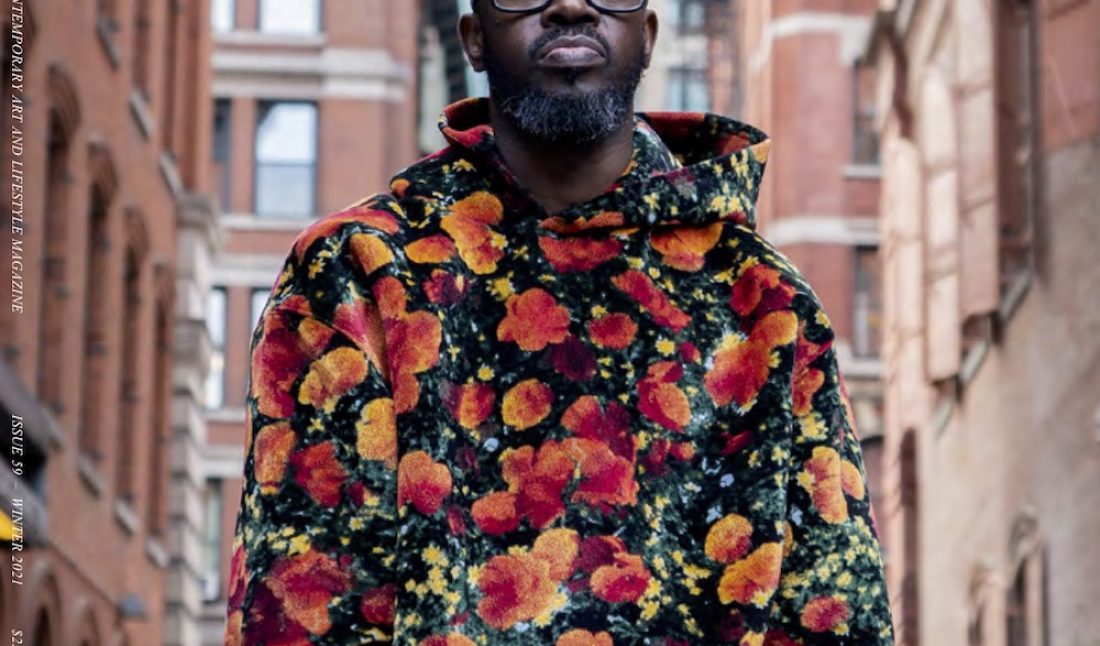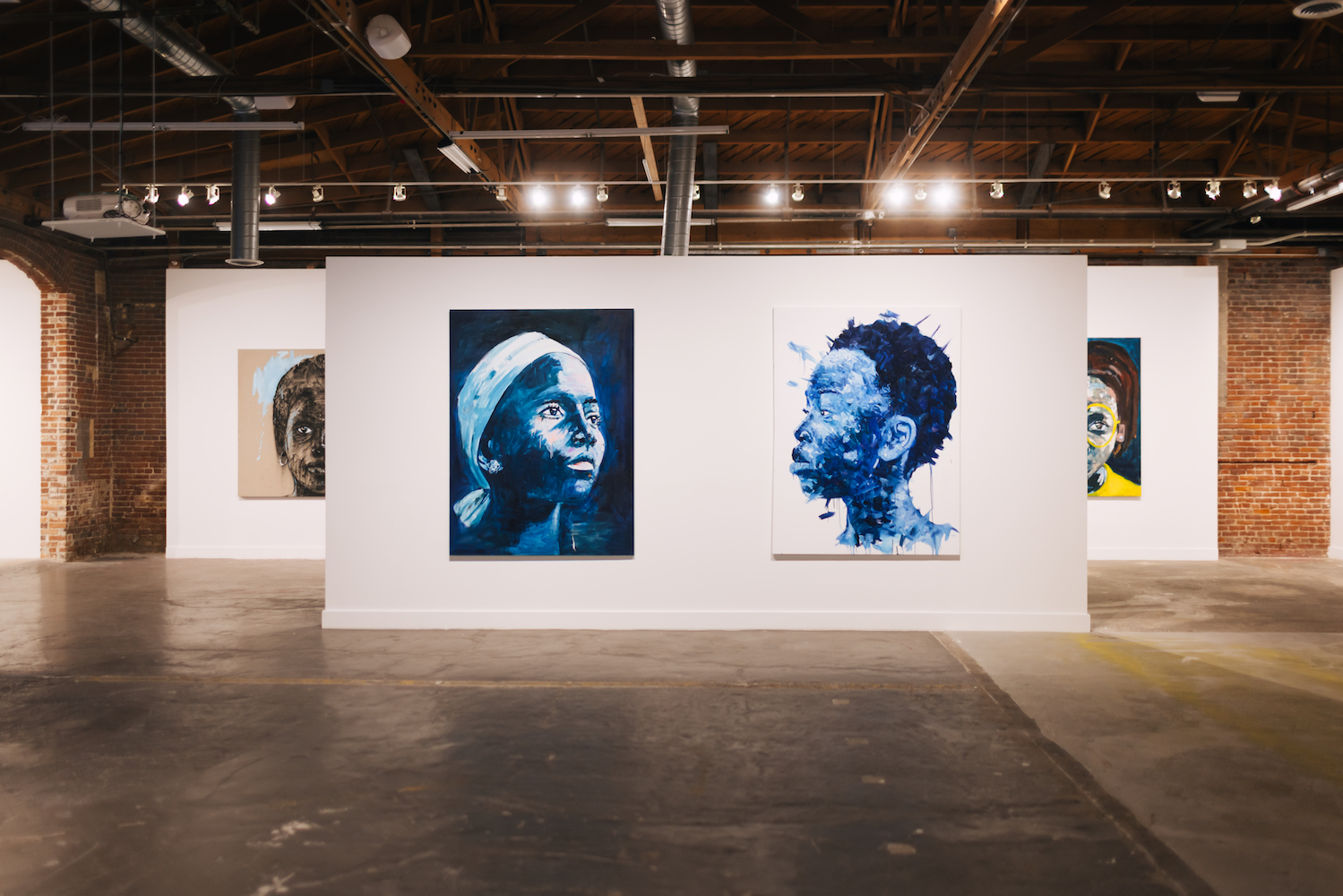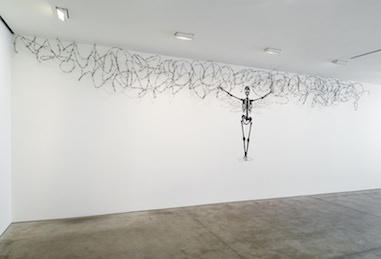Nkosinathi Maphumulo is an internationally recognized music producer and DJ from South Africa, known as Black Coffee. Fans around the world routinely pack his performances, from intimate shows to large-scale festivals, to hear a unique take on house music and engage in an atmosphere unlike many others. Equally regarded for overcoming strife and injustice in his younger years, he was shaped by his profound experiences during and after apartheid. Born in the township of Umlazi, he refused to be defined by a lack of opportunity and justice. Instead, he persevered to lead a creative life embedded with music, art, action, and change.
On the morning of Nelson Mandela’s release from prison in February 1990, Black Coffee was celebrating with friends in the street when a drunk driver struck him. He suffered a brachial plexus injury, resulting in losing all feeling in his left arm, but didn’t allow that to define his potential. He went on to explore the absence of house music in his country, add to the rising genre of Kwaito, and assist in liberating the sounds of South Africa. He’s gone on to headline the world’s largest concerts and recently acquired a significant stake in South Africa’s largest and oldest independent label. His aim is to change the landscape of the music industry and ensure that contracts for artists are fair.
Black Coffee is also an avid art collector and a proponent of acquiring pieces created in his home country. His early interests stemmed from within, and his art collection encompasses introspective themes that reflect his personal experiences. He has works in his home by artists and friends like Nelson Makamo, Lemi Ghariokwu, Wonder Buhle, and Harmonia Rosales.
Whitewall spoke with Black Coffee—whose album Subconsciously, featuring collaborations with Usher, Cassie, Pharrell Williams, Sabrina Claudio, David Guetta, Msaki from South Africa, and Sun-EL Musician comes out in February—about the emotions, stories, and change he sees in music and art.
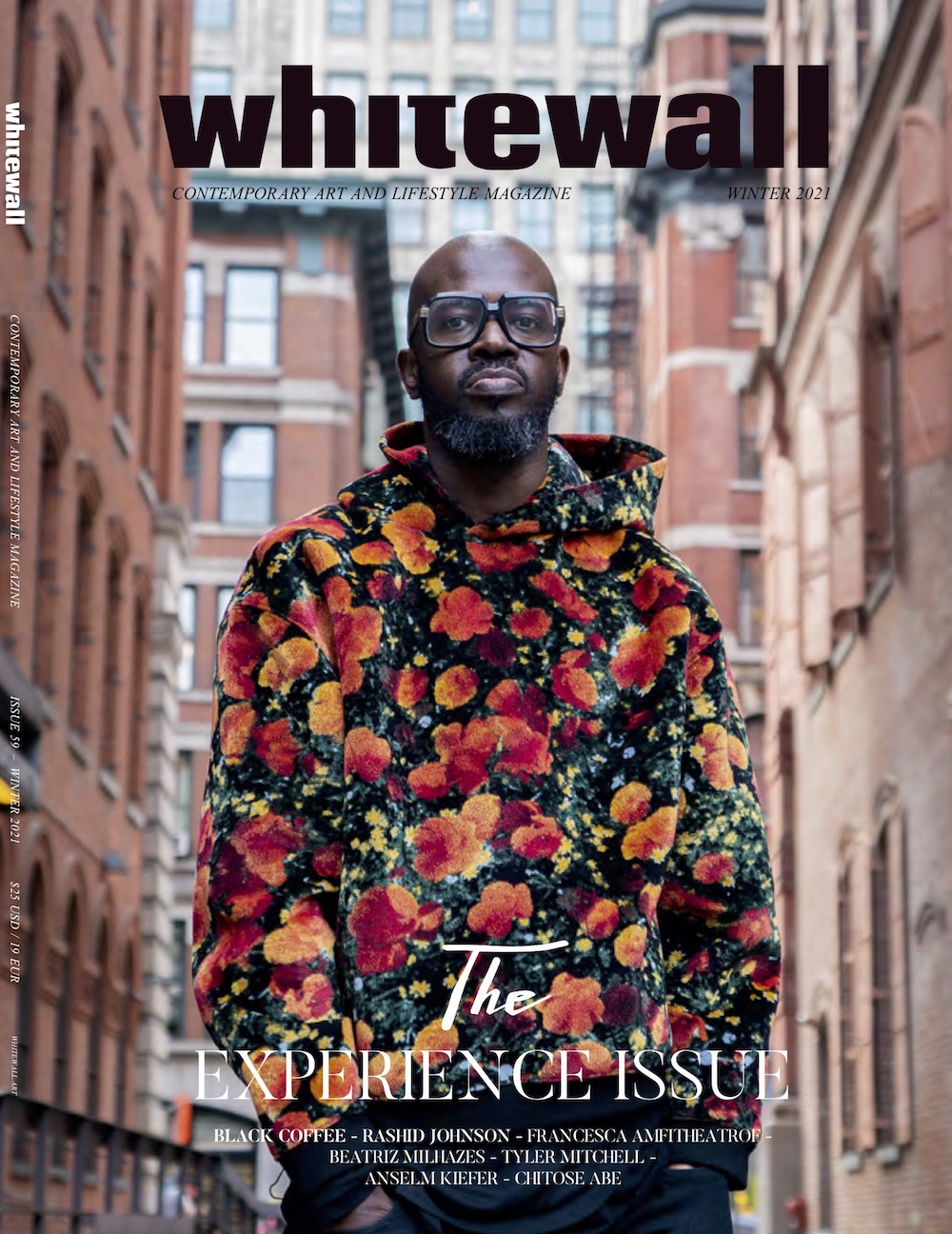 Whitewall Winter 2021 Experience Issue, cover portrait by Matt Ligotti, courtesy of Black Coffee.
Whitewall Winter 2021 Experience Issue, cover portrait by Matt Ligotti, courtesy of Black Coffee.
WHITEWALL: You’ve said, “From the beginning, I wanted to make house music the way I feel it, with all the influences around me.” Can you describe your music and its influences?
BLACK COFFEE: The kind of house music I make is strongly influenced by my upbringing in music and my growth in understanding self-doubt on the journey I’ve been through. As a DJ, as a music student, as a fan of music, all of the elements are mostly inspired by what I love. My inspiration could come from any genre—jazz, R&B, classical music.
WW: You described house music as an escape for you and said that South Africans today are still trying to escape underlying racism. How so?
BC: We are a nation of song. In almost every gathering, if the sound goes off, people will start singing. It’s always been one thing that we have in common as a country—whether Black or white, we have a very strong sense of music.
South Africans love heartfelt songs. They love songs with feeling; it doesn’t matter what genre. People here connect to a song, mostly to music with soul. We also love dancing. We are associated as a dancing nation, but music has played a very big role in the struggles back in the day, when things were really tough for people of my color. South Africans rely so much on music, in so many different ways.
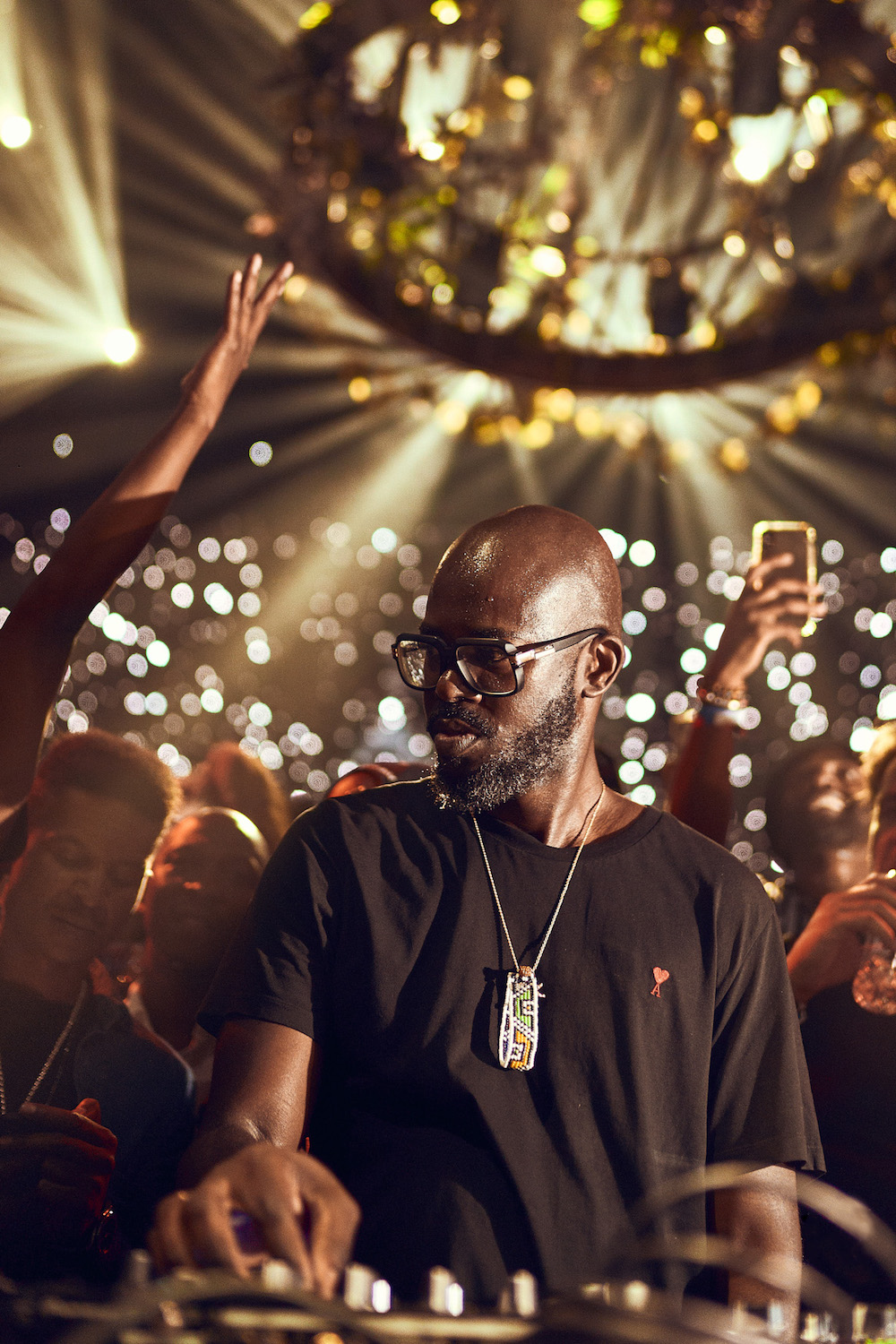 Black Coffee DJing at Hï Ibiza, courtesy of the venue.
Black Coffee DJing at Hï Ibiza, courtesy of the venue.
WW: From where does your interest in visual arts stem?
BC: As a kid I used to really love drawing with a pencil. Mostly, I started tracing cartoons from cartoon books, anything that had to do with animation—Donald Duck, Mickey Mouse. Then, growing up, I started drawing anything that I liked.
Up to when I was supposed to go to university, I had to choose between studying fine art or music. I chose music. Funny enough, ever since then, I never picked up a pen to draw again. It’s something I would love to do again and learn. In the meantime, I try to collect as much as I can—the kind of art that I truly love!
WW: How did you start collecting?
BC: I actually can’t remember when I started collecting. I used to feel that the bigger the piece, the more the value or more the impact. Over time, I’ve learned actually that it doesn’t matter what size it is. I love any piece of art that talks to me and I can connect with. I always felt super excited when adding to my collection.
At the same time, I’m very aware of how powerful art can be in one’s soul. I try to not get art that puts me down. It doesn’t matter how beautiful it is, I do not acquire it because it triggers so many things. Growing up in the country that I did, I try to get art that is happy and colorful so it can always inspire me and inspire my energy.
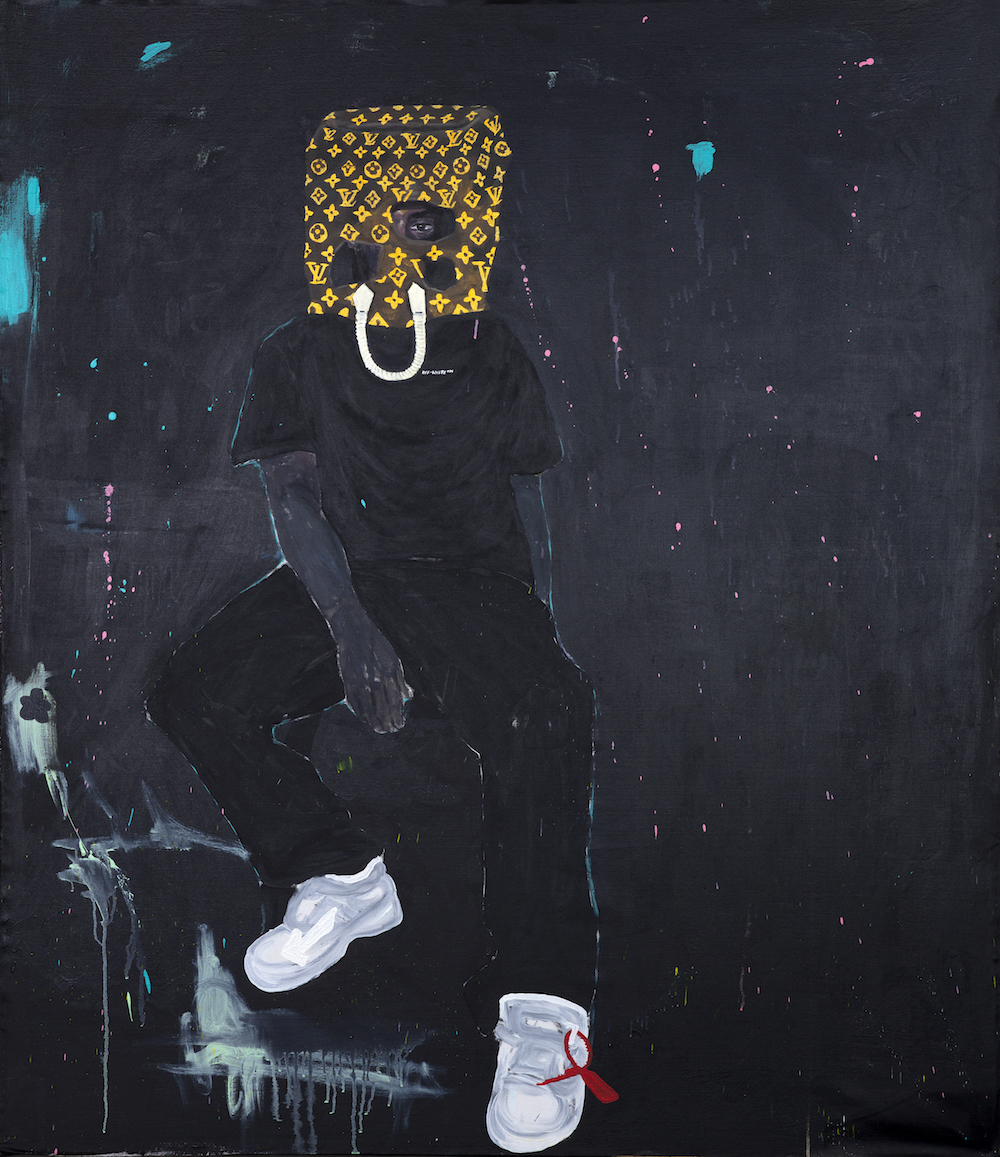 Wonder Buhle Mbambo, Portrait of a Visionary (Virgil Abloh), courtesy of the artist.
Wonder Buhle Mbambo, Portrait of a Visionary (Virgil Abloh), courtesy of the artist.
WW: Is there an overall theme in your collection?
BC: I don’t have a theme for my collection. I’ve got different pieces from different places. I’ve got Japanese art, art from my country, art from America. Obviously, South African art being the most dominant. I’ve got sculptures as well—South African sculptures, and an Italian one that I got in Sardinia.
At times I do an emotional buy. I mostly choose pieces that make the space lighter. When you walk into the space, you must feel light rather than heavy. It must be an inspiring piece.
WW: Is it important for you to have a relationship with the artists whose work you collect?
BC: It’s extremely important to have relationships with the artists. I try, by all means, to reach out to them directly. Some of the stuff I’ve collected are through relationships. One of the best people to do that is my dear friend Nelson Makamo. He recently had a show and was painting out of town for weeks, and he invited me to come over and see the work before it got to the exhibition. I love his work; it is very inspiring.
There’s an amazing guy, Wonder Buhle, who is really blowing up, and I’ve been collecting his stuff. We talk directly. There’s also Harmonia Rosales, who’s in L.A., who’s also a good friend. I recently bought a piece from her for my mother’s house, which is a picture of a Black Jesus Christ on the cross. Growing up, all we’ve seen in our living rooms all over the country—a country where we’re oppressed—is a picture of Jesus who was white and nailed on the cross. As a kid, that always bothered me. I never understood why a white man could be as great as Jesus, but at the same time oppress my father and my entire generation, and generations before. I’ve always wanted to see a Black Jesus.
When I saw this from her, I bought the print so I could have it at my mother’s house so that when my kids go to my mother’s house, they can see a different Jesus, a Jesus that looks like them, basically telling them they can be great people as well.
Some art for me is that deep, where I try to understand the meaning and I try to bring that into my space, even if I interpret it differently than the artist that painted it. As long as it makes sense to me.
Art, for me, is like music. Not everyone gets it, but it brings a certain joy. It can literally change your day, mood, or even the way you see life.
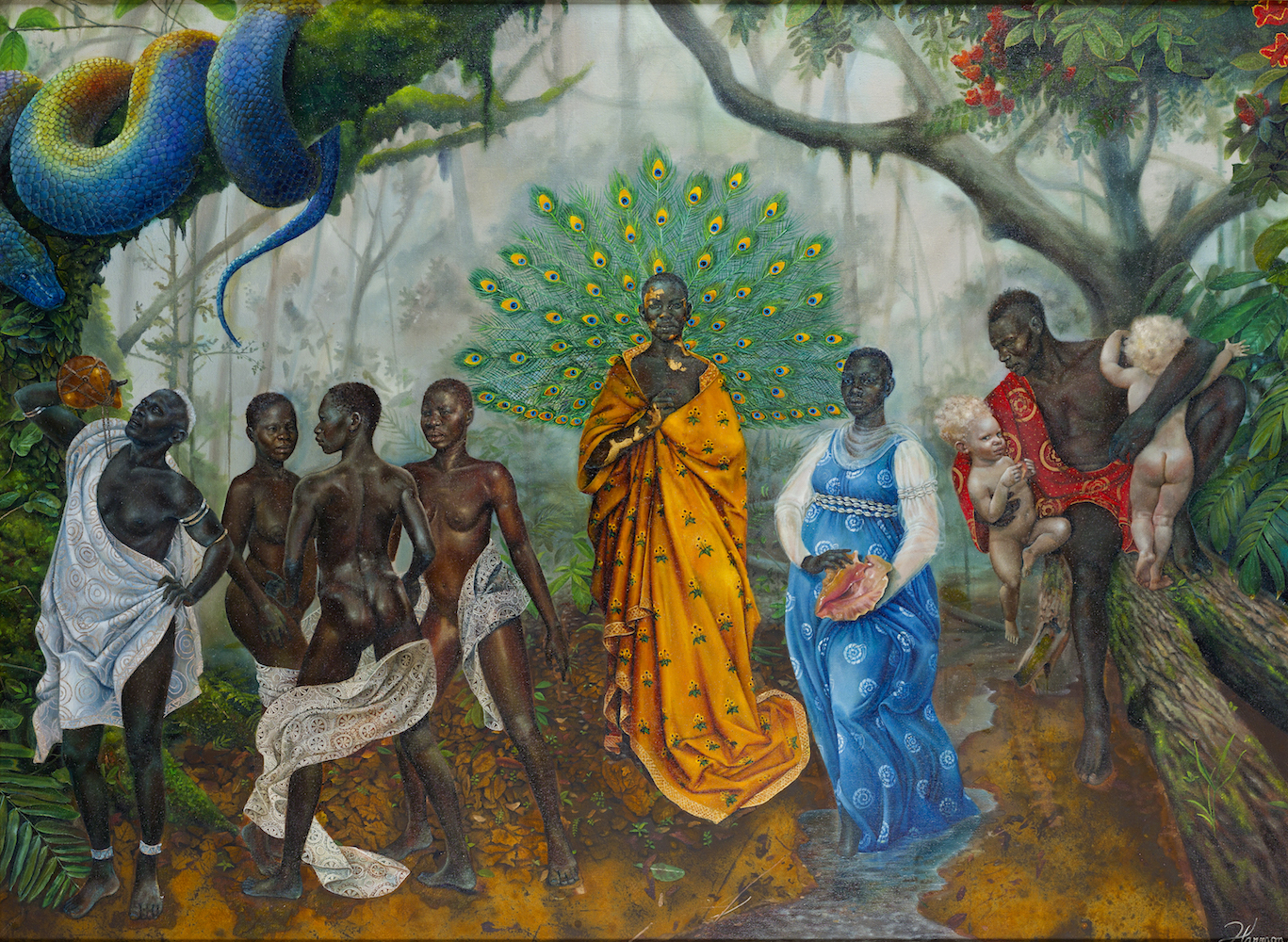 Harmonia Rosales, Asè, 2019, courtesy of the artist.
Harmonia Rosales, Asè, 2019, courtesy of the artist.
WW: Are you drawn to a specific medium?
BC: I wouldn’t say I’m drawn to any specific medium; it’s more of the whole work and how it’s presented, what stories it’s telling, and how powerful the image is.
WW: Are there works in your home you draw inspiration from each day?
BC: Plenty! That’s the stuff that I usually hang. One of the pieces I have is from Nigeria. It’s a painting of Fela Kuti—who was the king of Afro beats, one of the greatest musicians we’ve ever had on the continent—by Lemi Ghariokwu. He did all of Fela’s album covers. I made an offer through a friend of mine and convinced him to sell me the piece.
There’s also a special rug that was made by two friends of mine—Nelson Makamo and Laduma. Laduma made the rug and Nelson created the painting, and they embroidered the painting into the rug, which went up for auction. I think we were bidding against an American footballer. We were over the budget, but I couldn’t lose out on it! It was the first of its kind, and I thought that the first of this kind of collaboration could never leave the continent. So, fortunately, we outbid the person. This rug, we won’t even put it on the floor. We are literally going to frame it and put it in one of our properties.
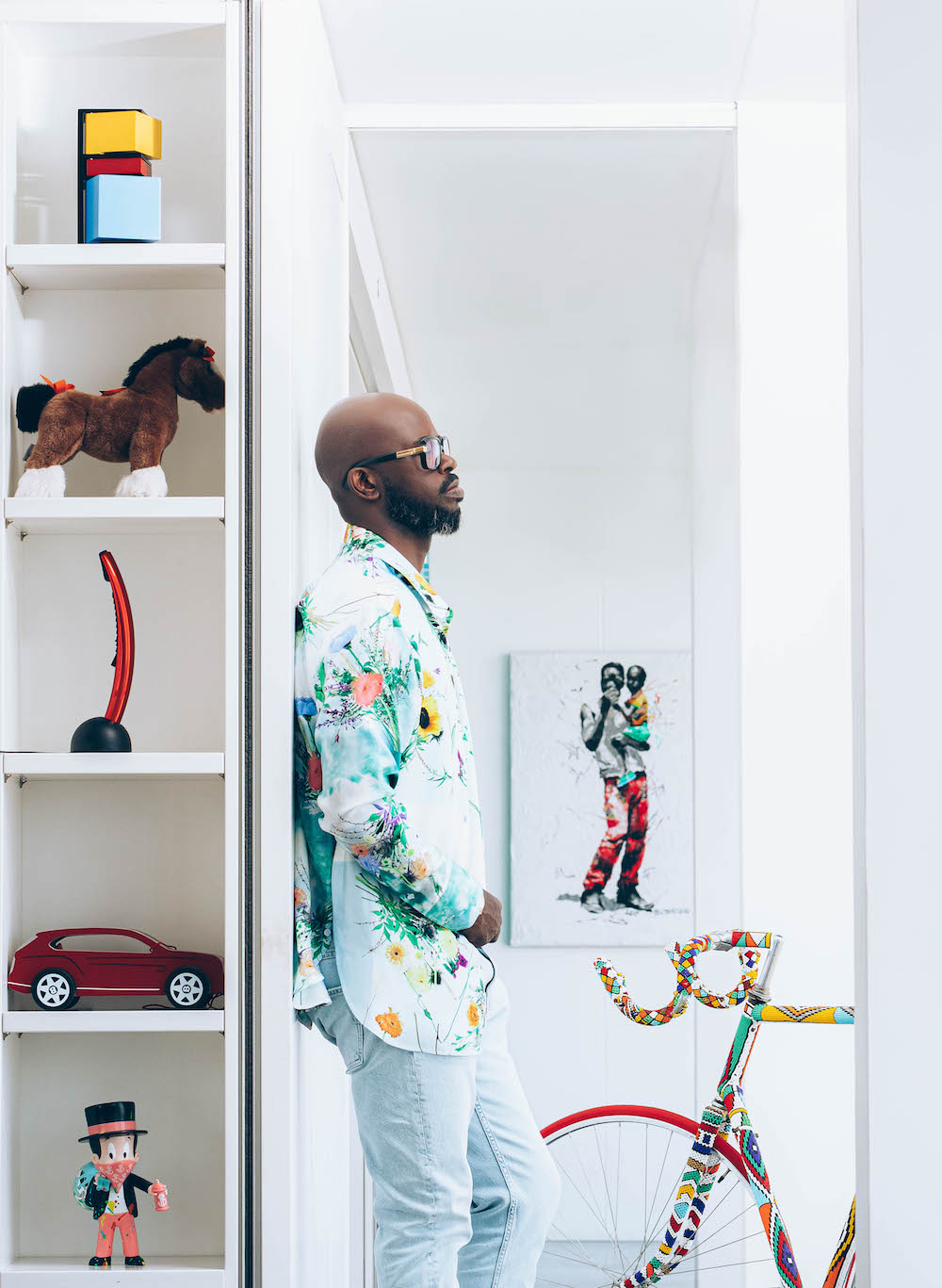 Portrait of Black Coffee by Mini Photography.
Portrait of Black Coffee by Mini Photography.
WW: Is there a work you like to wake up to every day—or see in your studio?
BC: Yes, it’s a Nelson Makamo piece again. It’s a work of this child who is wearing headphones with a yellow shirt. It’s so beautiful; it reminds me of a young me. I didn’t have headphones, as I couldn’t afford them, but the fact that the kid is listening to music . . . I see myself so much in that kid. The kid looks a little bit happier, which makes me happy.
WW: What relationship do you see between music and visual art?
BC: There is definitely a relationship between music and visual arts. I did a show called “Music Is King,” where I created a space to showcase art. I invited Alec Monopoly from L.A., and he painted live on stage while the artists were performing. He also painted a dress of one of the artists while she was performing. Him and Nelson Makamo live onstage was such a beautiful thing to watch. I believe most artists use music when they paint. There’s definitely a synergy there.
Art has always been, at least where I’m from, something that is for the people with access to money. It’s a bourgeois thing, even though most artists that make the art are literally from where we come from. One of my biggest dreams is to expose art to every African; where they start understanding it as early as possible, they start collecting, and it becomes a normal thing.
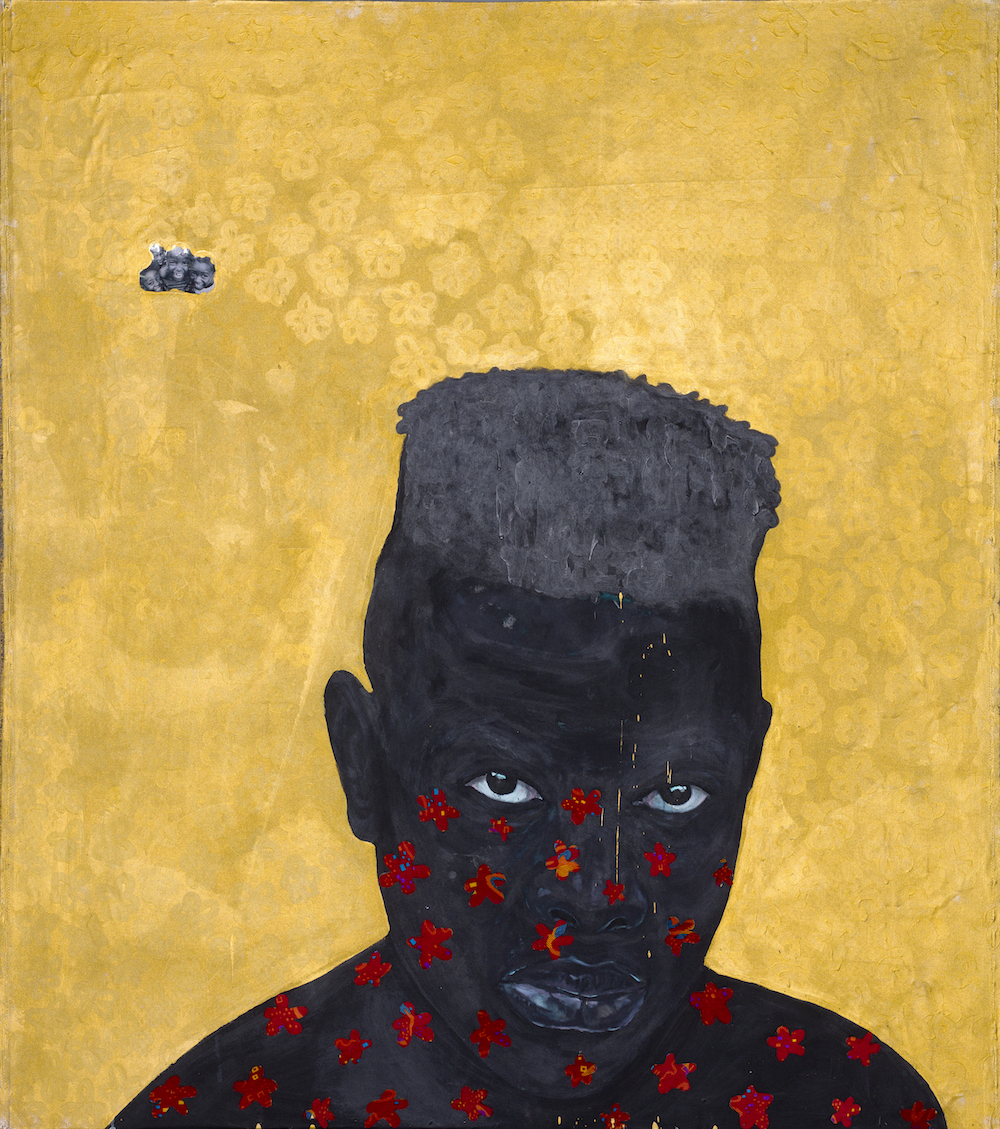 Wonder Buhle Mbambo, Emuva, 2019, courtesy of the artist.
Wonder Buhle Mbambo, Emuva, 2019, courtesy of the artist.
WW: Who are the artists you’re following as of late? Any recent discoveries?
BC: I just discovered a South African artist named Zandile Tshabalala. I think she’s still an art student. On Instagram, she is @zandiletshabalala_.
WW: Some of the artists you produce for and with—like Alicia Keys and Drake—are mega art collectors, too. Do any of these people or others influence your interests in art, design, or overall aesthetic?
BC: There are many people who inspire me in this space. Alicia Keys’s husband, Swizz Beatz, is one of the guys who have been my inspiration for the longest time. I love his moves. I love the stuff that he gets into outside of music. Some of the artists that I find I try to show to him, as well. If there’s one person that truly inspires me in art, it is definitely him.
Then, there’s Virgil Abloh in design. Not just in clothes, but in everything—in his thinking, and how he’s really living his dream of working on everything that he’s gifted in. That’s so inspiring for me because we conform so much and don’t explore our true potential. Virgil has shown everyone that you can be an architect, but at the same time own a clothing label like Off-White, be a creative director at Louis Vuitton, design a car, design CD players, design a mixer, make art . . . He does everything that he’s inspired to do. It helped me drop all my doubts and live my full potential.
It’s so beautiful to see South Africans today—everyone showing up in art, in clothes. We have brands that are doing so well—like Richard Mnisi, Thebe Magugu, and Trevor Stuurman, who worked on the Beyoncé movie and did an amazing job. There are so many South Africans that are owning up their greatness, and it’s truly inspiring to watch.
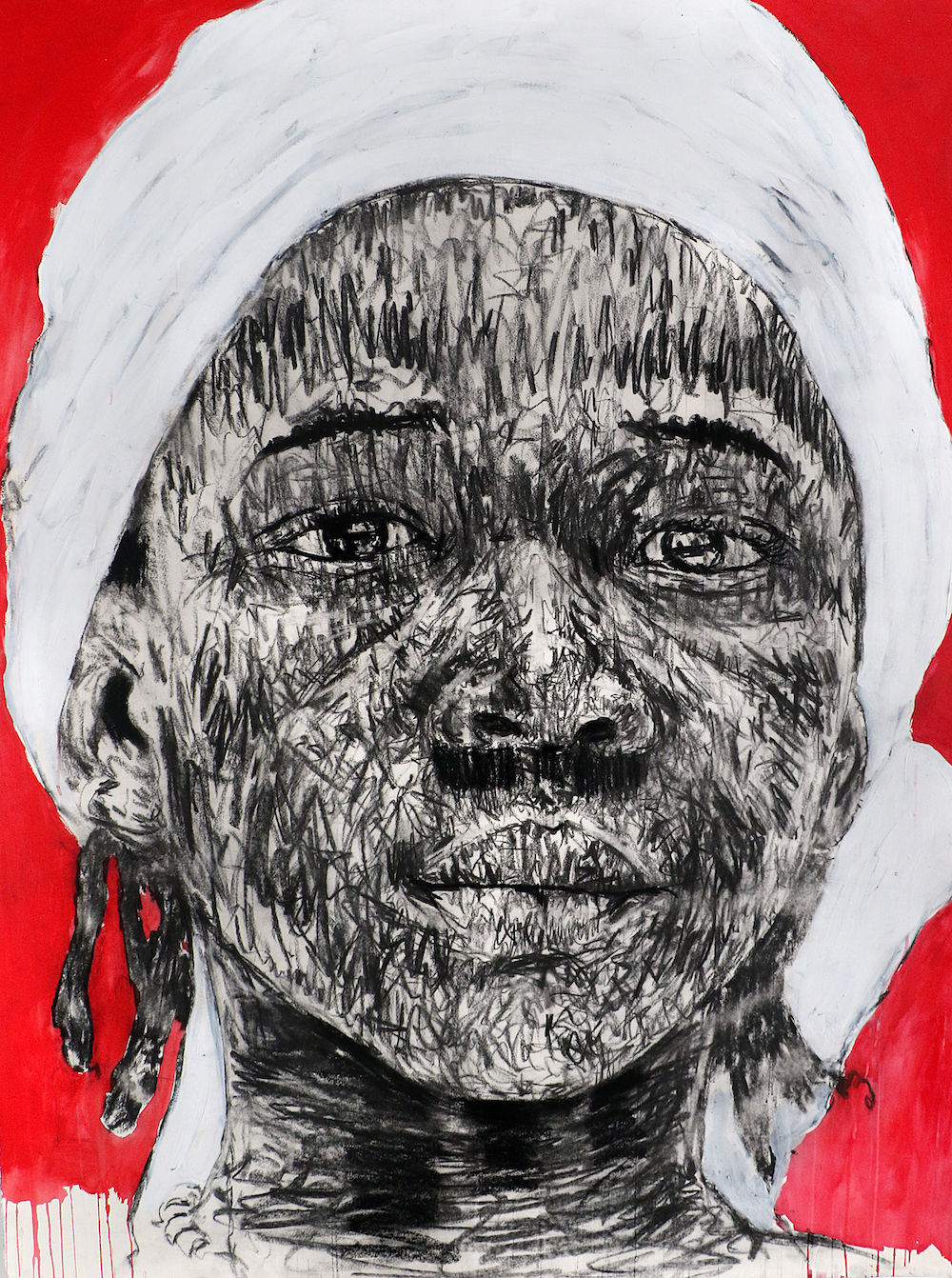 Nelson Makamo, Untitled, 2020, courtesy of the artist and Botho Project Space.
Nelson Makamo, Untitled, 2020, courtesy of the artist and Botho Project Space.
WW: You recently acquired a significant stake in Gallo Music Investments (GMI)—South Africa’s largest and oldest independent label—and said in an interview, “This is the first of many moves we are working on to change the landscape of both the South African and African music industry.” What changes are you aiming to make in the music industry there?
BC: One of the things that needs to change is how the music industry works. It needs to be rewritten. It’s never been created fair for the artist. I think by now everyone knows, even though we all want to be superstars and we all sign contracts because we’re getting stuff that we wouldn’t get [otherwise]. You’re better to sign than stay home and have nothing, basically.
I feel like we need to create a fair way of making money as a business, but also making sure that the artists that are not exploited. So we’re trying to create a new model with Gallo.
WW: How do you feel African musical artists are represented today? How do you hope they will be in the future?
BC: I feel like African music is represented much better than in the past, but there’s still room for growth. At first, we were in a space where we needed so much validation from the “superior” countries, the first world, because these are the countries that basically took us over. All our power. Therefore, we always thought they were better than us, and it’s still that way. It’s going to take many years to change that mindset. It’s our job to work on that as Africans and see greatness in ourselves. Also, to get in a space where we don’t want to sit at the table anymore, and we create our own tables and our own seats. There’s a lot of change that’s happened. I’m happy to see it.
We’re slowly getting in, but we also need to understand our power. We need to stop depending on other people and start creating our own scene. It can only happen when we collaborate with each other and we start creating things that are fair for everyone—for every artist and for every type of business that we are creating.






